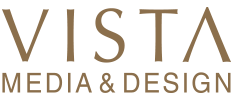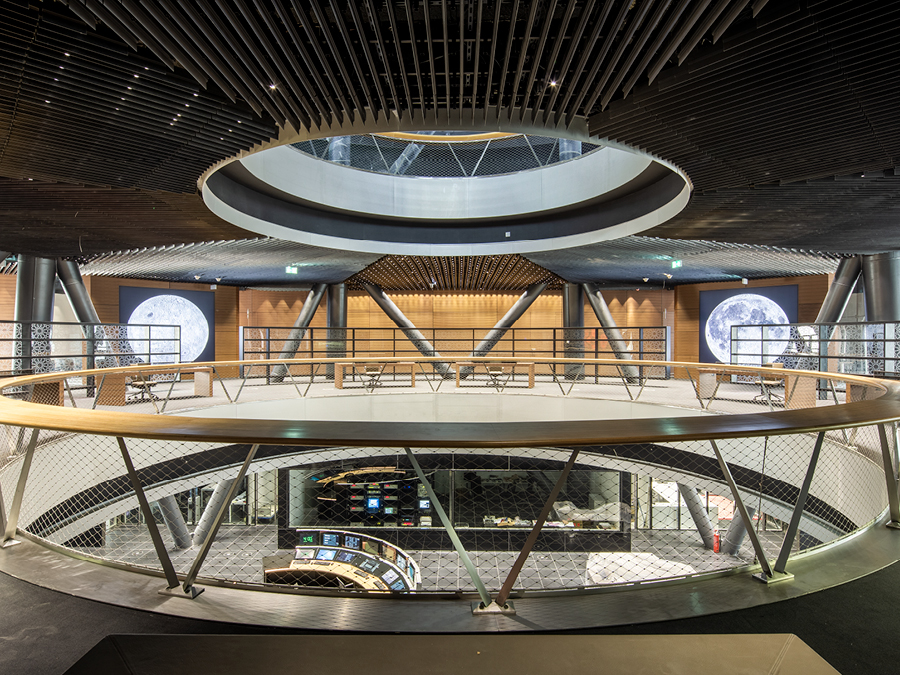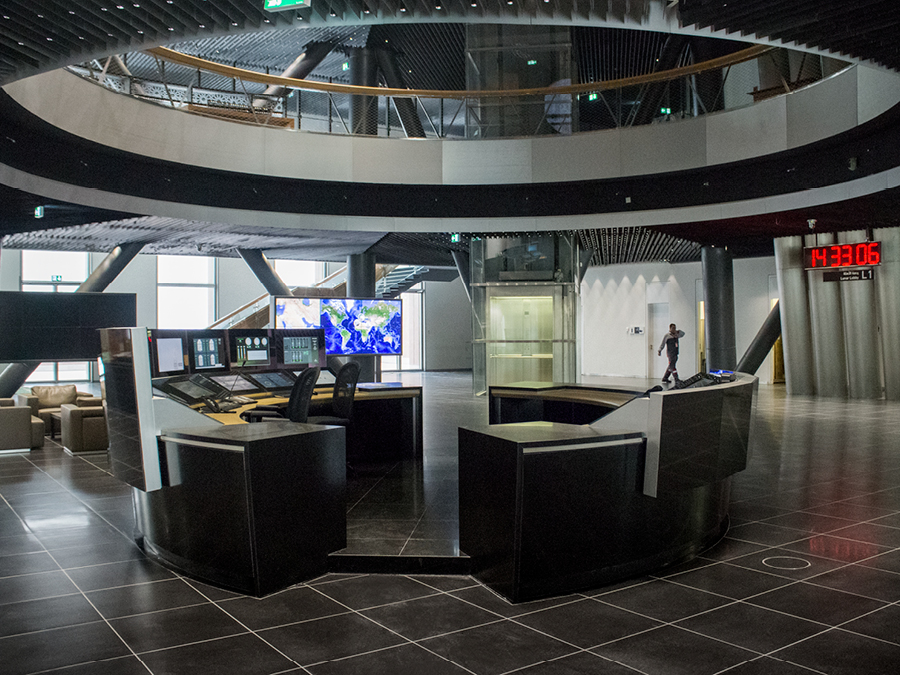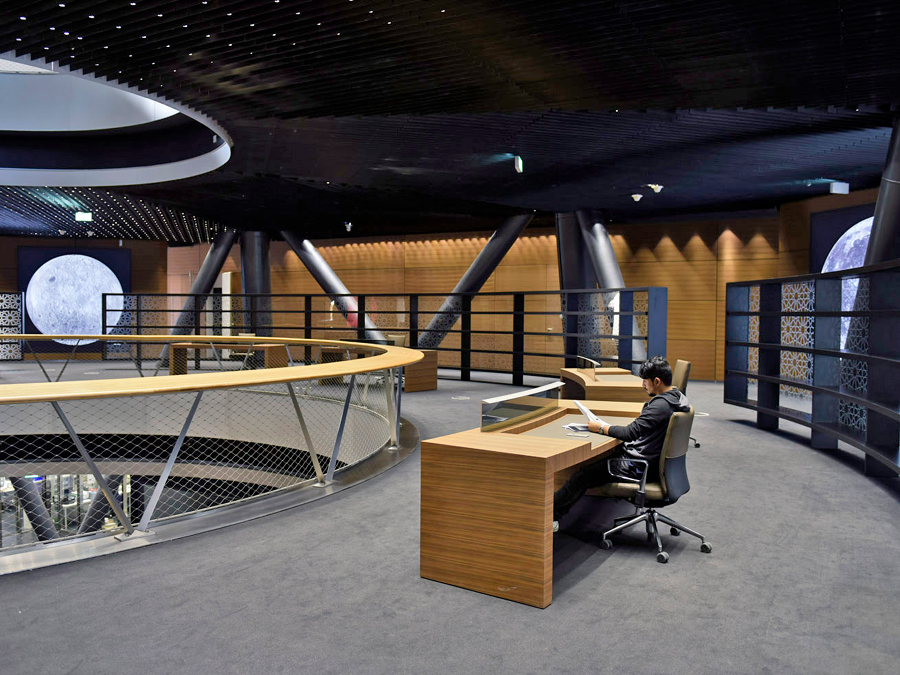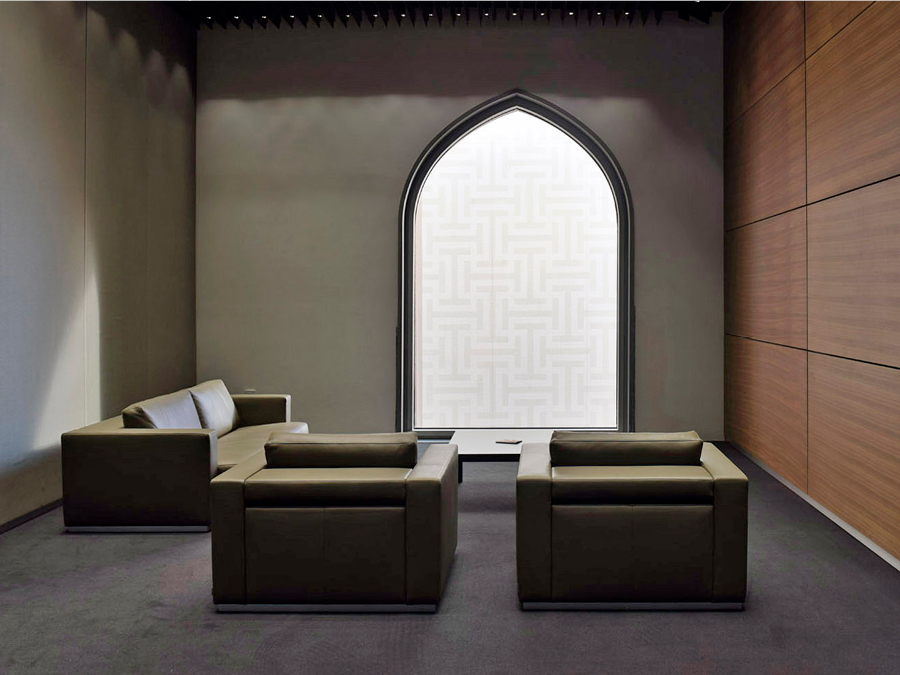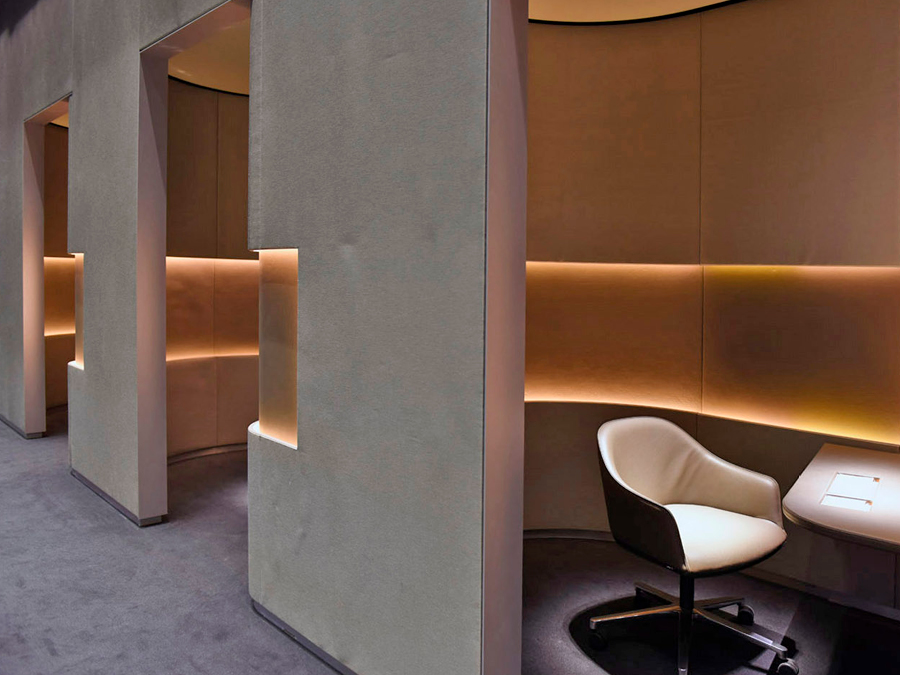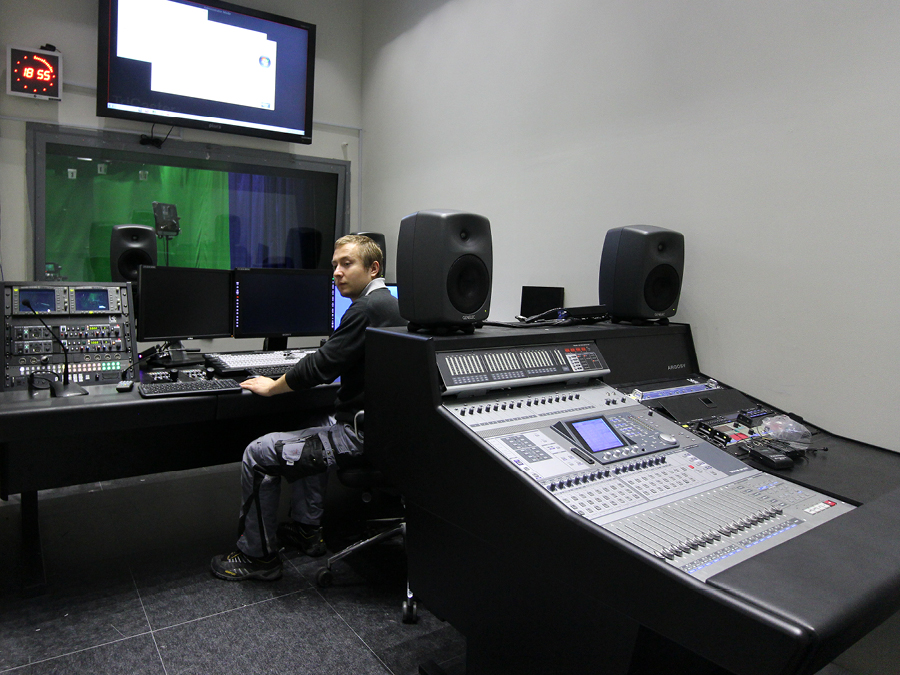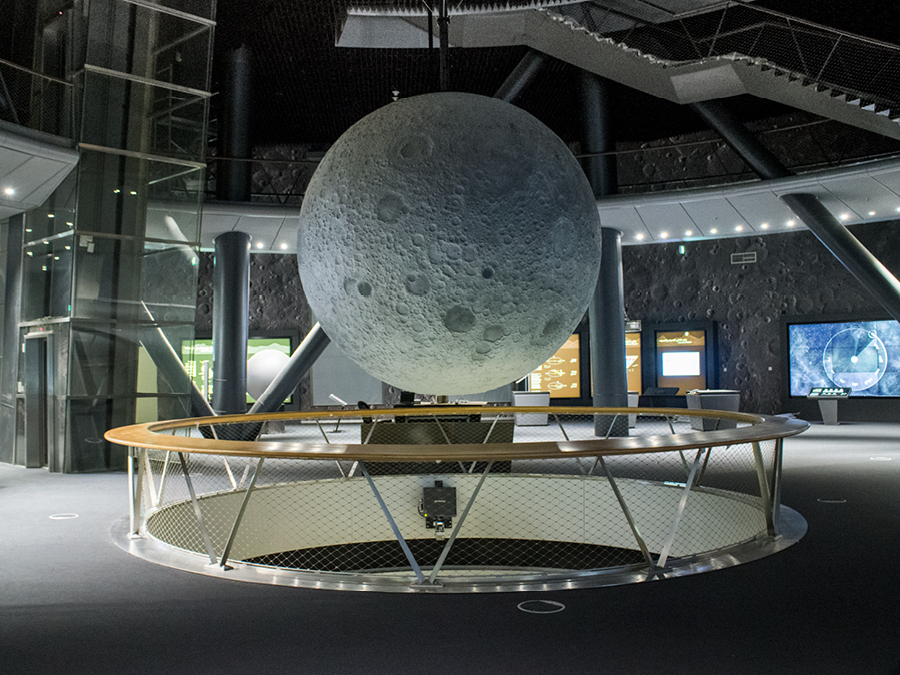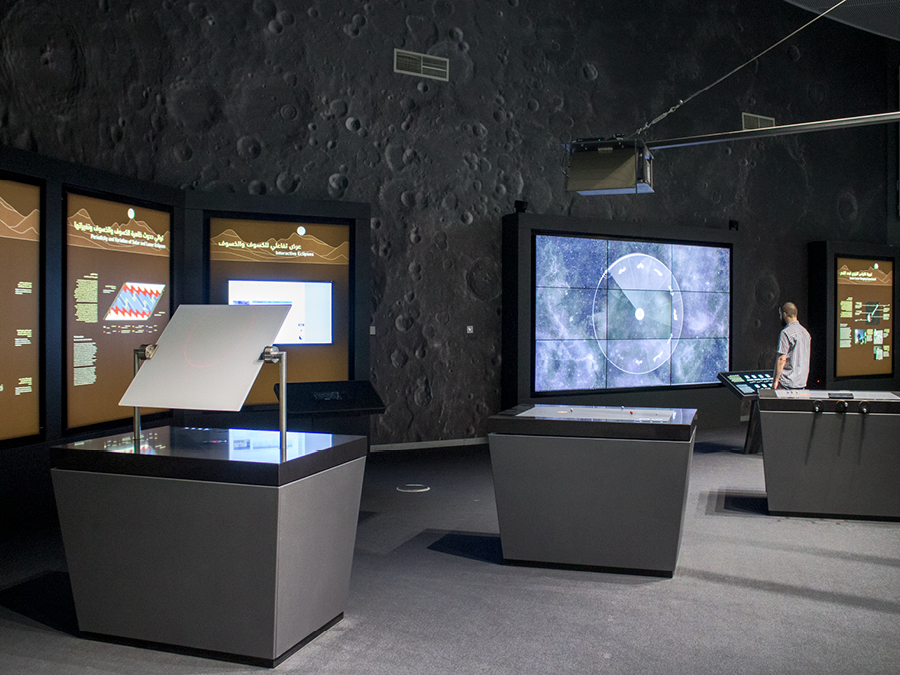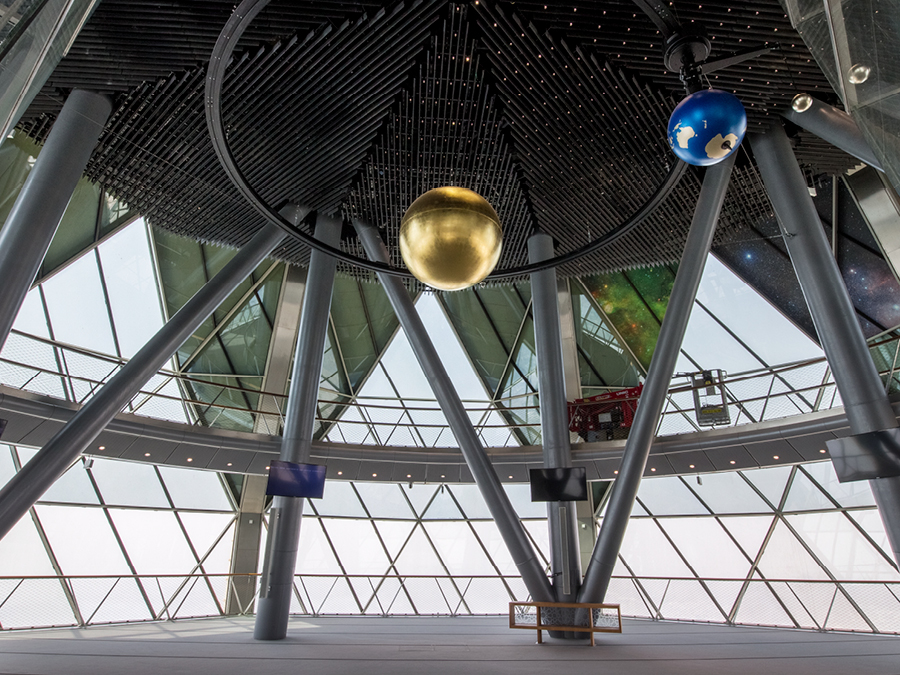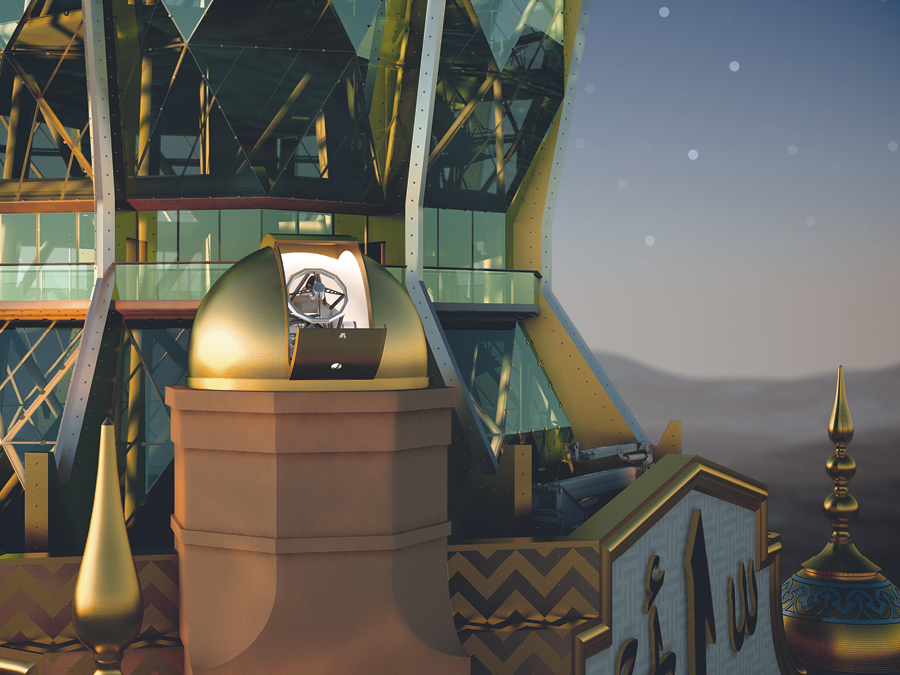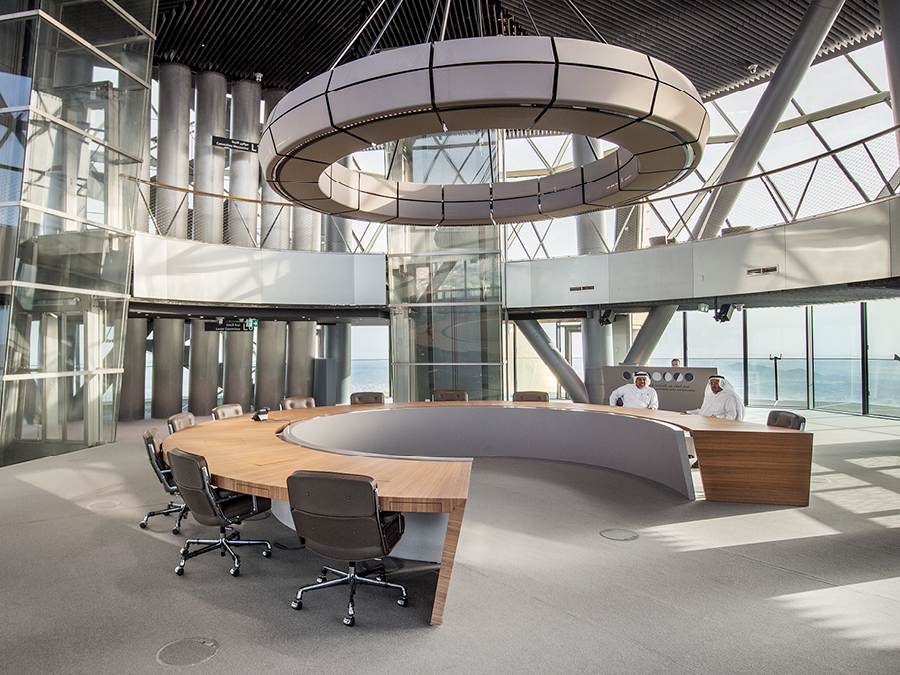The Lunar Science Center was created as a scientific facility for the determination of the Islamic calendar, a lunar calendar based on the celestial movement of the Moon. One of the most important criteria is the determination of the beginning of a new month by visual sighting of the crescent moon. Located in the upper floors of the Makkah Clock, the Center houses a special observatory for crescent observation, the Makkah Time Institute and some other facilities. The observatory is equipped with two telescopes. The large telescope has a mirror size of 1.2 meters and is used for exploring celestial objects and the moon surface in detail. Since the tower oscillation impairs observation, an adaptive mirror system was developed that uses high-precision gyros from fighter jets to measure the oscillation. A specially developed crescent telescope is mounted on top of the primary telescope. Special filters block light from the sun and the sky and amplify moonlight. This allows for a sighting of the crescent, even during daylight and in near areas to the sun. This is the first telescope of its kind worldwide.
An ongoing collection of all available publications on lunar research is presented in the Lunar Library on an area of 760 sqm. In collaboration with the University of Tübingen, a special lunar database has been developed, and a comprehensive inventory of books and writings has been acquired. The Lunar Library is outfitted with specially designed circle segmented bookshelves and reading tables. Conference and lecture rooms are exclusively furnished and equipped with state-of-the-art media technology. Work boxes are installed as retreats for quiet work and research. The lunar database is available from every work box via integrated PCs and displays. In addition, visitors can explore the lunar database interactively using a large multi-touch screen. The Center includes a scientific exhibition of the Moon on a separate floor. The largest and most detailed model of the moon has been produced for the exhibition. The phases of the moon are shown with a special beam light that simulates the light of the sun. Details on the lunar surface are displayed by several projectors controlled via an interactive touchscreen. The exhibition shows other topics which include the orbit of the moon and the tides. The current distance from the Earth to the Moon is always visible on a screen.
The space inside the glass jewel is designed for a lunar committee. Two inclined glass elevators provide the main access to the floor. The generous horseshoe-shaped conference table is equipped with a state-of-the-art video conferencing system with 12 retractable displays. Directional microphones and speakers for each seat are integrated in a central chandelier, which also provides pleasant and glare-free lighting thanks to indirect LED modules. A total of nine LCD screens make up the main room display, which measures 4.2 meters in size. This display is used to present crescent observations from the robotic telescope stations and hold video conferences at the same time. A modern and compact television studio was installed to broadcast sightings and other announcements to a global audience. The top floor is used as a prayer space and houses a mechanical tellurium with a size of 7 meters. It is the world’s most modern and largest instrument of its kind and is precisely controlled using a computer-based system.
